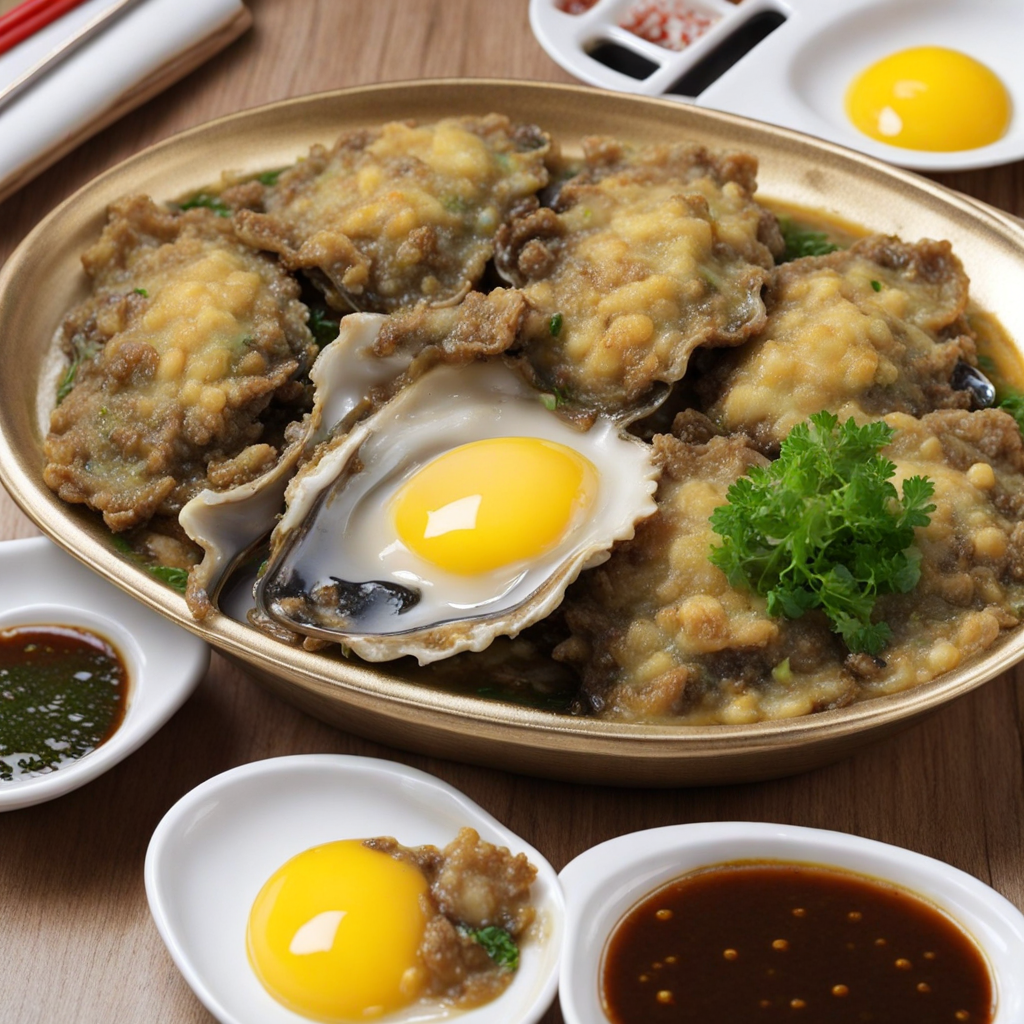Taiwanese Sausage
Taiwanese sausage is a delightful and flavorful treat that captivates the palate with its unique blend of spices and textures. This beloved street food is crafted from high-quality pork, which is finely minced and mixed with a harmonious combination of sweet and savory seasonings. The sausages are often infused with a touch of soy sauce, rice wine, and a hint of five-spice powder, delivering a rich umami flavor. The result is a sausage that is both juicy and tender, with a slightly chewy casing that adds a satisfying bite with every mouthful. One of the distinctive features of Taiwanese sausage is its subtle sweetness, which comes from the addition of sugar during the preparation process. This sweetness beautifully complements the savory notes of the pork and spices, creating a balanced flavor profile that is irresistible. The sausages are typically grilled or roasted to perfection, allowing the natural juices to caramelize on the surface, resulting in a slightly crispy outer layer that contrasts wonderfully with the moist interior. Often served on a skewer, Taiwanese sausage is a popular snack at night markets and food stalls across Taiwan. It is not uncommon to find it paired with fresh garlic, cilantro, or a drizzle of sweet chili sauce, enhancing the overall experience with bursts of freshness and extra layers of flavor. Whether enjoyed on its own or as part of a larger meal, Taiwanese sausage offers a delightful exploration of taste that showcases the vibrant culinary heritage of Taiwan.
How It Became This Dish
The History of 台灣香腸 (Taiwanese Sausage) #### Origins: A Cultural Mosaic Taiwanese sausage, known as 台灣香腸 (Tái wān xiāng cháng), is a beloved street food that reflects the island's rich cultural tapestry. Its origins can be traced back to the culinary traditions brought by Han Chinese immigrants, particularly from the Fujian province, who settled in Taiwan over several centuries. This migration, which began in the 17th century, introduced a variety of food practices and ingredients that would eventually meld into the unique Taiwanese identity. The initial versions of Taiwanese sausage were heavily influenced by the Chinese method of making sausages, particularly the Cantonese and Fujian styles. These sausages were traditionally made from pork, mixed with rice wine, soy sauce, sugar, and various spices. The sweet, savory flavor profile of these early sausages laid the groundwork for the modern interpretation that we see today. #### Evolution: Ingredients and Techniques As Taiwanese sausage evolved, it began to develop its unique characteristics. One of the most notable changes was the incorporation of glutinous rice, which gives the sausage a slightly chewy texture and distinctive sweetness. This modification resonated with the local palate and quickly became a defining feature of the sausage. In the early 20th century, during the Japanese colonial period (1895-1945), Taiwanese sausage underwent further transformation. The Japanese introduced modern food preservation methods, including refrigeration, which allowed for more consistent production and distribution. Additionally, the Japanese influence brought new ingredients, such as sake and different spices, enriching the flavor profile. The post-war period marked a significant turning point for Taiwanese sausage. After World War II, the arrival of new immigrants from mainland China added further complexity to the dish. Different regions brought their own variations and techniques, leading to a diverse array of flavors and styles. #### Cultural Significance: A Symbol of Community Taiwanese sausage is more than just a food item; it embodies community and tradition. It is an integral part of the island’s street food scene, often found at night markets, festivals, and family gatherings. The preparation and consumption of the sausage involve social practices that highlight the importance of food in Taiwanese culture. At night markets, vendors skillfully grill the sausages over open flames, filling the air with an irresistible aroma. Patrons often enjoy the sausage with a side of fresh herbs, such as cilantro, and a drizzle of spicy sauce, creating a delightful combination of flavors and textures. The act of sharing a meal, especially in bustling night markets, fosters a sense of community, making Taiwanese sausage a beloved staple that brings people together. Moreover, Taiwanese sausage is often featured in celebratory meals and festivals, such as the Lunar New Year and other local festivities. It serves as a symbol of abundance and prosperity, making it a fitting dish for joyous occasions. The preparation of the sausage can also involve family members coming together, emphasizing the connection between food and familial bonds. #### Modern Adaptations: Global Influence and Innovation In recent years, Taiwanese sausage has gained international recognition, spurred by the global interest in Taiwanese cuisine. As Taiwanese immigrants and food enthusiasts have settled abroad, they have introduced this culinary delight to new audiences. The rise of food trucks and pop-up restaurants has also played a significant role in bringing Taiwanese sausage to a wider audience. Contemporary interpretations of Taiwanese sausage include innovative flavor combinations and fusion dishes. For instance, some vendors experiment with fillings like cheese or spicy sauces, appealing to younger generations and adventurous eaters. This adaptability has allowed Taiwanese sausage to remain relevant in an ever-evolving culinary landscape. Moreover, the health-conscious movement has led to the development of alternatives, such as chicken or vegetarian sausages, catering to diverse dietary preferences. These adaptations, while divergent from traditional recipes, showcase the sausage's versatility and potential for innovation. #### Conclusion: A Culinary Legacy Today, Taiwanese sausage stands as a testament to the island's rich culinary history and cultural significance. It embodies a blend of traditional practices and modern influences, reflecting the ever-changing nature of food culture. As Taiwanese cuisine continues to gain popularity worldwide, the humble sausage is poised to remain a symbol of Taiwan's identity—a delicious reminder of its storied past and a celebration of its vibrant future. In essence, Taiwanese sausage is more than just a delicacy; it is a narrative of migration, adaptation, and community. Its journey from a traditional food item to a modern culinary icon encapsulates the heart of Taiwanese culture, representing the melding of flavors, traditions, and stories that define the island. Whether enjoyed at a bustling night market in Taiwan or a trendy eatery abroad, Taiwanese sausage remains a cherished dish that connects people through the universal language of food.
You may like
Discover local flavors from Taiwan






